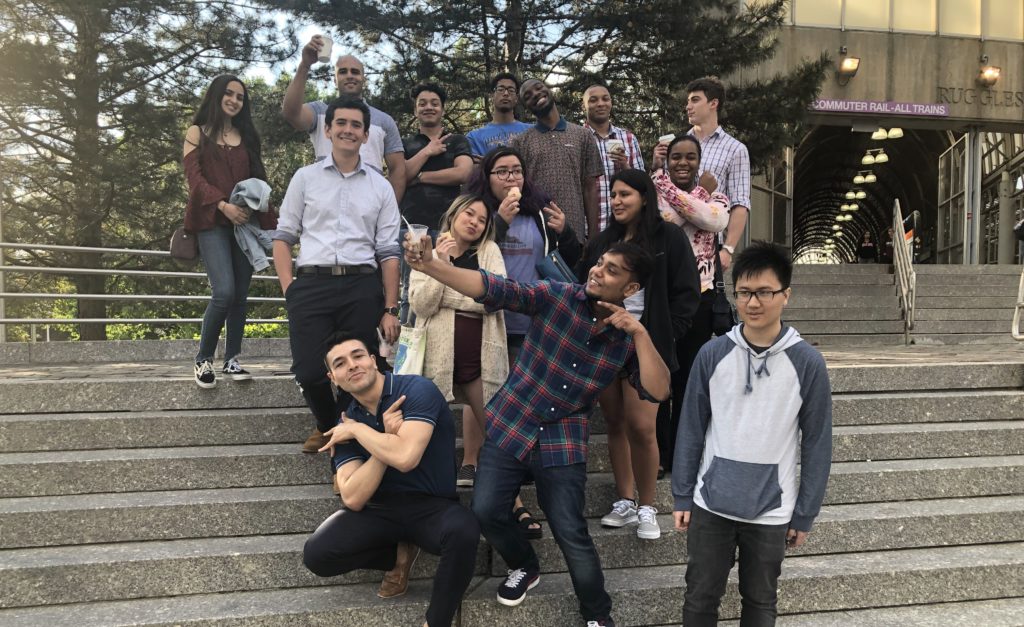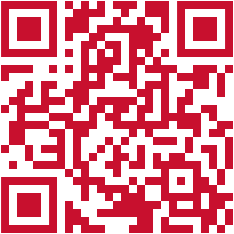REU-POWER: ENERGY SHORT-COURSE
HOME | INFO | PROJECTS | MENTORING | STUDENTS | APPLY
2019 Energy Bootcamp Recap
Day 1
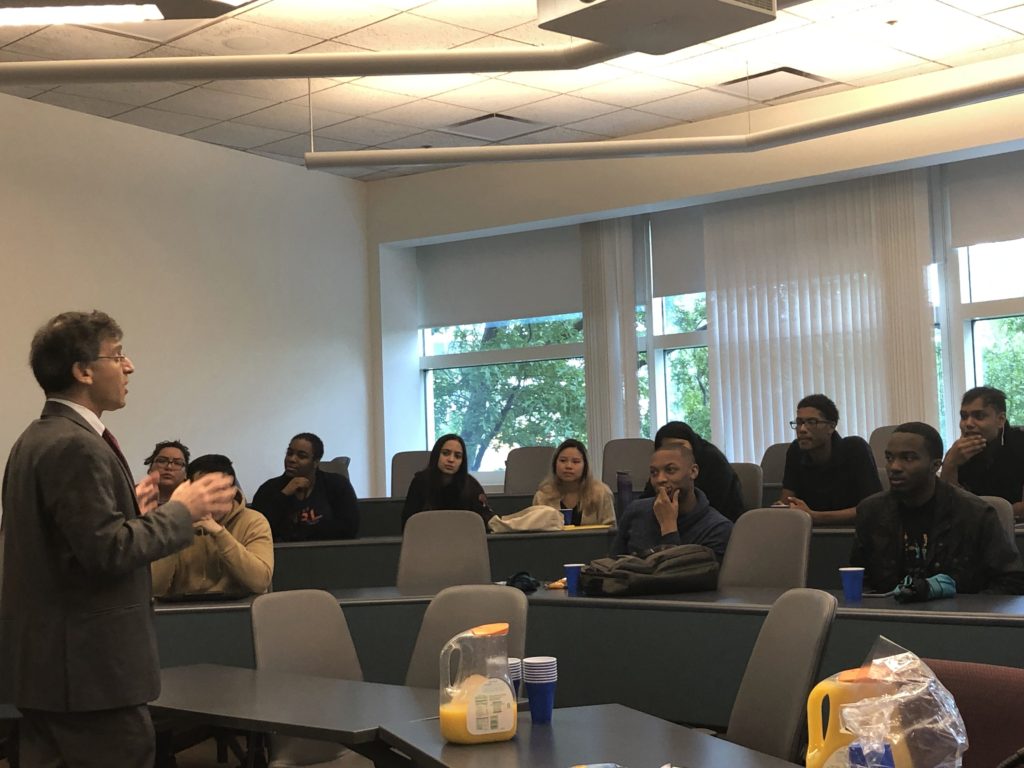 Students learned the difference between renewable and sustainable energy. Students learned how much energy is consumed by the United States on average. The proper units and terminology associated with energy and power were introduced and discussed. Various types of renewable energy sources were introduced. Some of the sources students were familiar with, while others were new to them. Students also learned about their carbon footprints and learned how to calculate their individual carbon footprint on a daily basis as well as for a residential home. Students were able to reflect and hopefully make small changes in their daily lives to lessen their carbon footprint.
Students learned the difference between renewable and sustainable energy. Students learned how much energy is consumed by the United States on average. The proper units and terminology associated with energy and power were introduced and discussed. Various types of renewable energy sources were introduced. Some of the sources students were familiar with, while others were new to them. Students also learned about their carbon footprints and learned how to calculate their individual carbon footprint on a daily basis as well as for a residential home. Students were able to reflect and hopefully make small changes in their daily lives to lessen their carbon footprint.
Day 2
Students learned about environmental ethics and how they vary depending on locations. The differences between morals, values, and ethics were discussed. The various philosophies of the environment were discussed including anthropocentrism, biocentrism, ecocentrism, deep ecology were explored.
 Students learned about hydro power and electricity. The history of hydro turbines and the advancements made in their designs were explained. The top hydropower producing states in the US were identified. The basic structure of hydroelectric dams were shown to students. Students learned how hydroelectric dams can produce electricity. The advantages and disadvantages of hydro power were explored. The engineering behind hydro power was explained which included Bernoulli’s equation, Faraday’s law, etc. By the end of the session, students were able to find system efficiency as well as electrical power produced by a hydro power plant.
Students learned about hydro power and electricity. The history of hydro turbines and the advancements made in their designs were explained. The top hydropower producing states in the US were identified. The basic structure of hydroelectric dams were shown to students. Students learned how hydroelectric dams can produce electricity. The advantages and disadvantages of hydro power were explored. The engineering behind hydro power was explained which included Bernoulli’s equation, Faraday’s law, etc. By the end of the session, students were able to find system efficiency as well as electrical power produced by a hydro power plant.
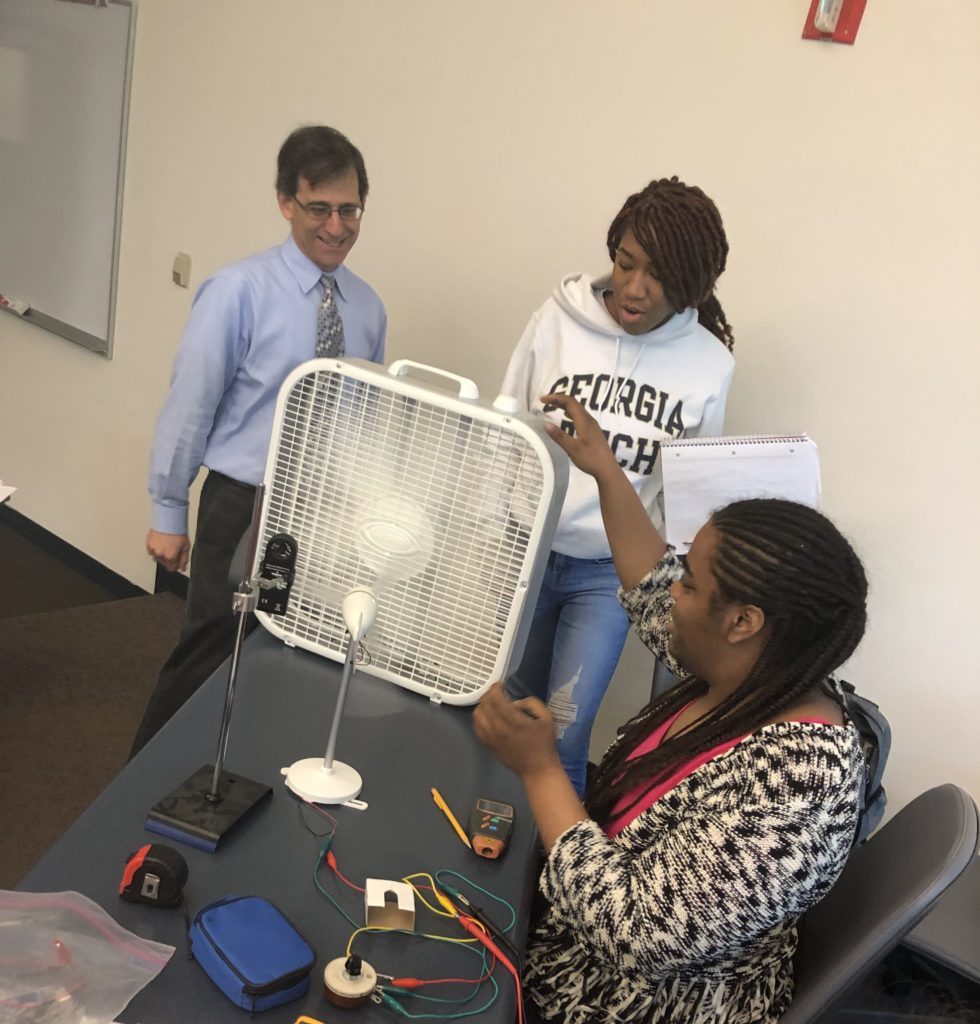
Wind harvesting was introduced to students. Students learned the various rotor designs for wind turbines as well as how much wind power is used in the United States and other parts of the world. Students learned the physics behind how wind flows through a turbine to produce energy. The math behind figuring out the power of the wind was explored which included kinetic energy. The Betz Criterion (the law for getting maximum power from the wind) was explained and derived for students. Efficiency of the rotor was also explored.
Students ended day two by participating in a lab exercise. This exercise included of a model of a wind turbine that was connected to a resistive load and students were able to see real time how certain things affect the power (including blade type, using three or two blades, pitch angle of blades, etc.) Students were encouraged to work in groups and socialize with others.
Day 3
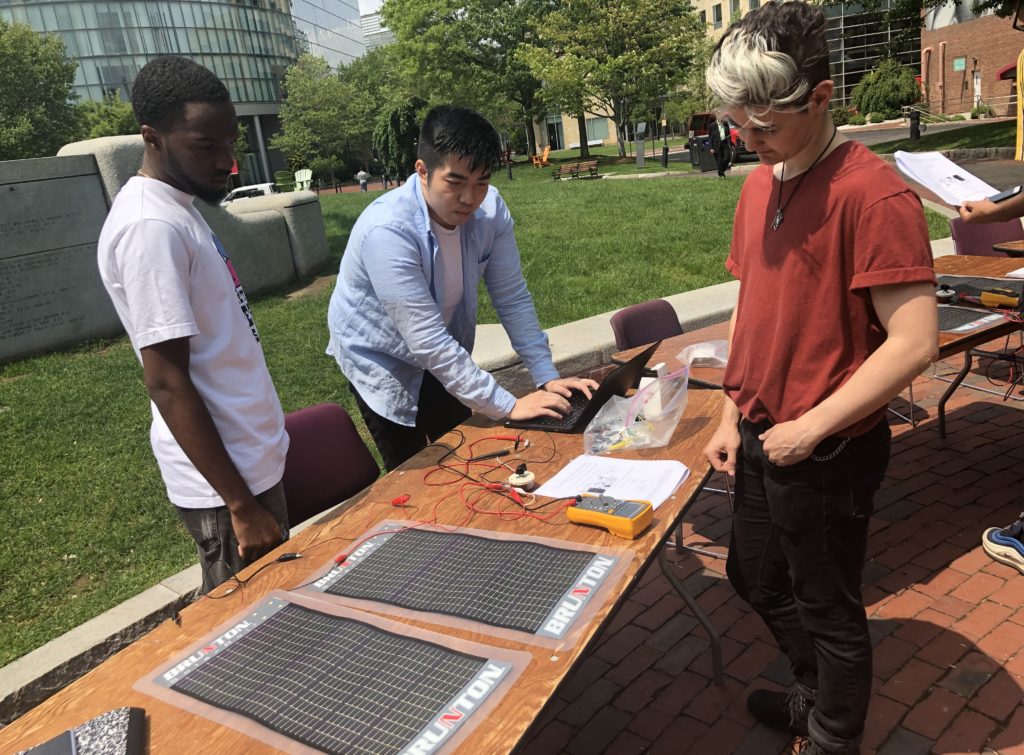 The fundamentals behind electricity were introduced to students. Fundamentals of voltage, current, and the differences between DC and AC were explained. The electric grid was explained which included the origins. The Edison vs Tesla power delivery system was explained. Transformers were introduced as well as how they work was shown. Three phase systems of electricity transmission were shown and explained. The smart grid was introduced to students and students were encouraged to offer thoughts on the standard grid vs the smart grid.
The fundamentals behind electricity were introduced to students. Fundamentals of voltage, current, and the differences between DC and AC were explained. The electric grid was explained which included the origins. The Edison vs Tesla power delivery system was explained. Transformers were introduced as well as how they work was shown. Three phase systems of electricity transmission were shown and explained. The smart grid was introduced to students and students were encouraged to offer thoughts on the standard grid vs the smart grid.
Students learned about the background of solar energy and its many applications. Solar PVs, solar towers, solar water heaters were among the applications discussed. Understanding the irradiance of the sun for solar energy was useful to students. Students learned how to design and price out a solar system for a residential home which included learning about payback period, rebates, etc. Students were introduced to the concept of maximum power point which is a big factor in solar photovoltaics.
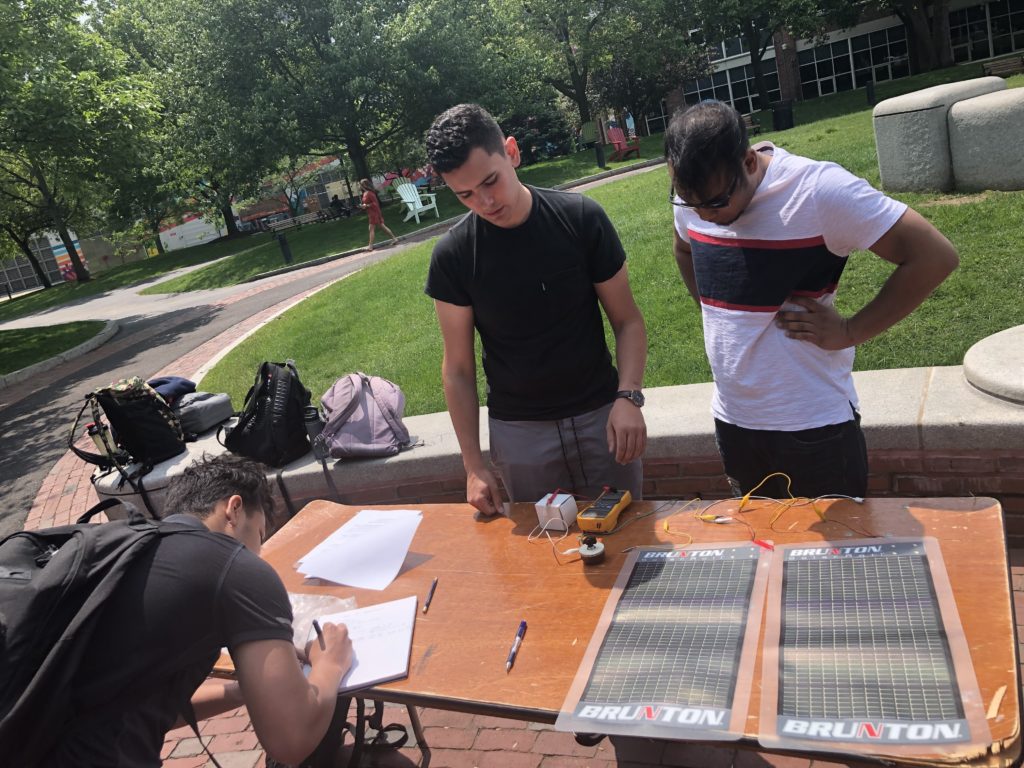 The lab experiment was another group exercise, with students being placed in groups of 3 or 4. In the lab experiment, students measured voltage and resistance of a solar panel with an added load. The power was computed. Students learned how to connect panels in series and parallel. Shading was introduced to show students the effects. The resistance was varied and experiments were repeated over and over again until students found the maximum power point. Students completed lab reports and submitted them. The lab report exercise exposed students to writing technical reports, if they had no prior experience.
The lab experiment was another group exercise, with students being placed in groups of 3 or 4. In the lab experiment, students measured voltage and resistance of a solar panel with an added load. The power was computed. Students learned how to connect panels in series and parallel. Shading was introduced to show students the effects. The resistance was varied and experiments were repeated over and over again until students found the maximum power point. Students completed lab reports and submitted them. The lab report exercise exposed students to writing technical reports, if they had no prior experience.
2018 Energy Bootcamp Recap
Day 1
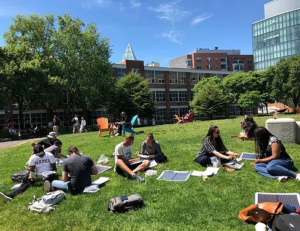 Students learned the difference between renewable and sustainable energy. Students learned how much energy is consumed by the United States on average. The proper units and terminology associated with energy and power were introduced and discussed. Various types of renewable energy sources were introduced. Some of the sources students were familiar with, while others were new to them. Students also learned about their carbon footprints and learned how to calculate their individual carbon footprint on a daily basis as well as for a residential home. Students were able to reflect and hopefully make small changes in their daily lives to lessen their carbon footprint.
Students learned the difference between renewable and sustainable energy. Students learned how much energy is consumed by the United States on average. The proper units and terminology associated with energy and power were introduced and discussed. Various types of renewable energy sources were introduced. Some of the sources students were familiar with, while others were new to them. Students also learned about their carbon footprints and learned how to calculate their individual carbon footprint on a daily basis as well as for a residential home. Students were able to reflect and hopefully make small changes in their daily lives to lessen their carbon footprint.
Day 2
Students learned about environmental ethics. The differences between morals, values, and ethics were discussed. Students were encouraged to come up with their own set of ideas. The various philosophies of the environment were discussed including anthropocentrism, biocentrism, ecocentrism, and deep ecology were explored.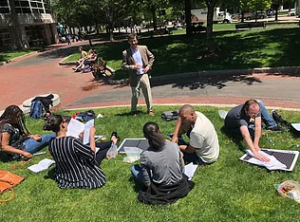
Wind harvesting was introduced to students. Students learned the various rotor designs for wind turbines as well as how much wind power is used in the United States and other parts of the world. Students learned the physics behind how wind flows through a turbine to then produce energy. The math behind figuring out the power of the wind was explored which included kinetic energy. The Betz Criterion (the law for getting maximum power from the wind) was explained and derived for students. Efficiency of the rotor was explored as well. Students ended day two with a demo of a model of a wind turbine connected to a resistive load and were able to see real time how certain things affect the power (including blade type, using three or two blades, pitch angle of blades, etc.) Students were encouraged to explore the model wind turbines.
Day 3
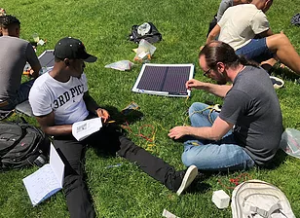 Students learned about the background of solar energy and its many applications. Solar PVs, solar towers, solar water heaters were among the applications discussed. Understanding the irradiance of the sun for solar energy was useful to students. Students learned how to design and price out a solar system for a residential home which included learning about payback period, rebates, etc. Students were introduced to the concept of maximum power point which is a big factor in solar photovoltaics.
Students learned about the background of solar energy and its many applications. Solar PVs, solar towers, solar water heaters were among the applications discussed. Understanding the irradiance of the sun for solar energy was useful to students. Students learned how to design and price out a solar system for a residential home which included learning about payback period, rebates, etc. Students were introduced to the concept of maximum power point which is a big factor in solar photovoltaics.
In the lab experiment, students measured voltage and resistance of a solar panel with an added load. The power was computed. The resistance was varied and experiments were repeated over and over again until students found the maximum power point. Students are to complete lab reports and submit them.
Day 4
Students learned about the background of solar energy and its many applications. Solar PVs, solar towers, solar water heaters were among the applications discussed. Understanding the irradiance of the sun for solar energy was useful to students. Students learned how to design and price out a solar system for a residential home which included learning about payback period, rebates, etc. Students were introduced to the concept of maximum power point which is a big factor in solar photovoltaics. In the lab experiment, students measured voltage and resistance of a solar panel with an added load. The power was computed. The resistance was varied and experiments were repeated over and over again until students found the maximum power point. Students are to complete lab reports and submit them.
Students learned about hydro power and electricity. The history of hydro turbines and the advancements made in their designs were explained. The top hydropower producing states in the US were identified. The basic structure of hydroelectric dams were shown to students. Students learned how hydroelectric dams can produce electricity. The advantages and disadvantages of hydro power were explored. The engineering behind hydro power was explained which included Bernoulli’s equation, Faraday’s law, etc. By the end of the session, students were able to find system efficiency as well as electrical power produced by a hydro power plant. The fundamentals behind electricity were introduced to students. Fundamentals of voltage, current, and the differences between DC and AC were explained. The electric grid was explained which included the origins. The Edison vs Tesla power delivery system was explained. Transformers were introduced as well as how they work was shown. Three phase systems of electricity transmission were shown and explained. The smart grid was introduced to students and students were encouraged to offer thoughts on the standard grid vs the smart grid.


